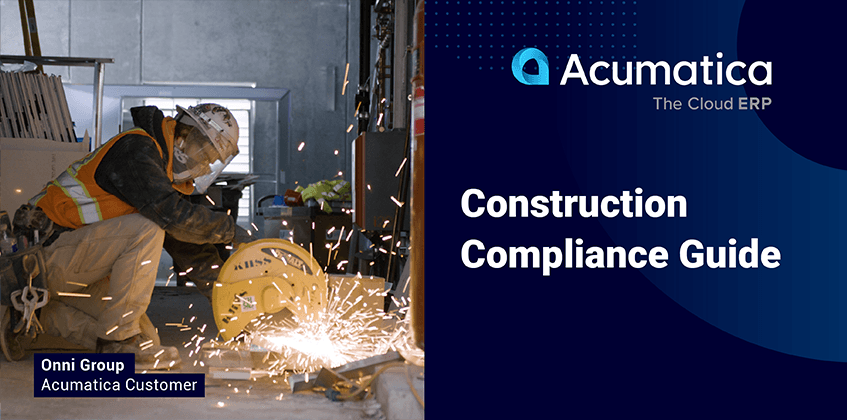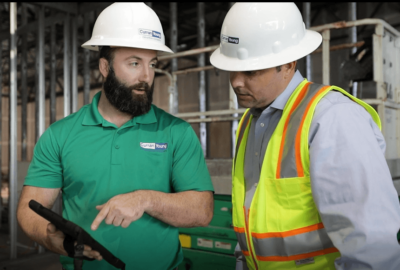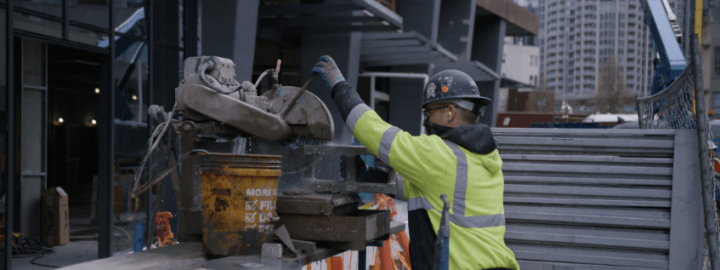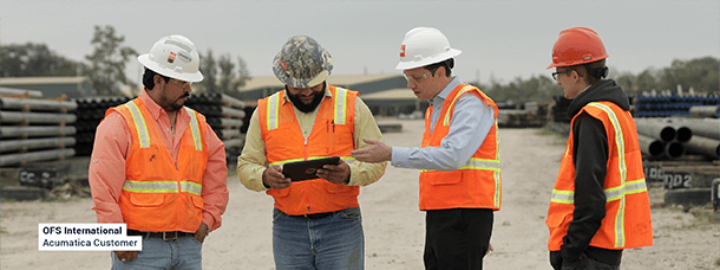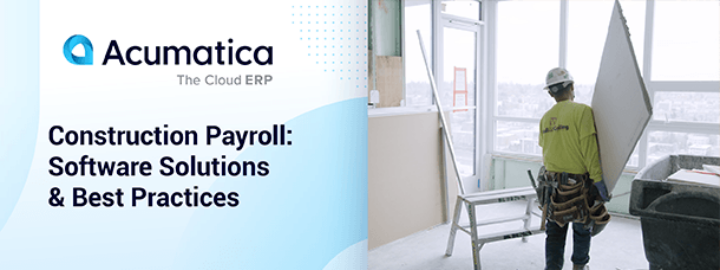Construction Compliance Needs: A Practical Guide
The construction industry faces an intricate web of regulations and standards, making compliance a pivotal aspect of every project. Given the legal, safety, and financial implications of non-compliance, industry professionals need to clearly understand what construction compliance entails, why it matters, and how to effectively manage it.
This guide will provide insights for managing various compliance requirements across the construction industry.
Understanding Construction Compliance
There are many regulations, standards, and conditions to which every construction firm must adhere to ensure all projects are properly and safely completed. Such compliance requirements equally apply to general contractors, subcontractors, home builders, land developers, and service contractors.
Importance of Compliance
Compliance keeps every person on a jobsite safe. It also ensures projects are built correctly, keeping end users safe—homeowners in their houses, pedestrians crossing a bridge, etc. And compliance protects construction firms from potentially business-altering consequences, like traumatic lawsuits, steep fines, expensive delays, and ruined reputations.
Overview of Compliance Law and Regulations
The Occupational Safety and Health Administration (OSHA), which was established in 1971 as part of the United States Department of Labor, sets and enforces standards that create a safe, healthy job environment for construction workers. However, there are other compliance areas construction firms and contractors must know, including contract, environmental, and labor compliance and building code requirements.
Key Compliance Areas
Let’s take a brief look at each of these key compliance areas.
1. Health & Safety
According to OSHA, there are four main categories of construction hazards: Falls, Caught In/Between, Struck-By, and Electrocution. Examples of OSHA’s prevention requirements include wearing personal fall arrest equipment; covering, securing, and labeling floor openings; wearing high-visibility clothing; ensuring trenches or excavations are protected by sloping, shoring, benching, or trench shield systems; and locating and identifying utilities before starting work.
2. Contract
Every construction project begins with a contract that stipulates project timelines, budgets, specifications, and documentation requirements that are agreed upon by all responsible parties. Construction Lien Waivers enable contractors to make sure their financial assets and work are protected. Construction firms are required to meet the stipulations of these legally binding contracts. If they fail to do so, the customers can file a lawsuit to recover damages.
3. Environmental
Similar to health and safety compliance, environmental compliance is spearheaded by a federal agency. The Environmental Protection Agency (EPA), formed in 1970, directs construction firms in how to handle wastewater, air quality, stormwater runoff, solid and hazardous waste disposal, noise pollution, dust, emissions, and more.
The EPA is joined by the US Fish and Wildlife Service (USFWS) and the National Marine Fisheries Service (NMFS), two federal agencies tasked with enforcing the Endangered Species Act (ESA), which protects endangered or threatened fish, wildlife, and plants and their natural environments. The USFWS and NMFS publish a specific handbook for contractors.
Construction firms must also research their state and local requirements, which may have additional or even stricter standards.
4. Labor
Labor laws ensure that construction workers are working in a safe and healthy environment, are paid a fair wage, and have their time tracked accurately. These laws also provide anti-discrimination protection, require adequate employee training, and expect construction firms to maintain updated record keeping. Labor laws vary at the local, state, and federal levels, so construction companies must have a firm grasp of every code that applies to them.
5. Building Codes
Founded in 1901, the National Institute of Standards and Technology (NIST) is part of the U.S. Department of Commerce. NIST has investigated building failures for over 50 years and uses that knowledge to help update building codes nationwide. These building codes are laws, passed at the state and/or jurisdictional level, that outline the minimum building standards for how structural systems, plumbing, HVAC, natural gas systems, and more should be designed and built.
If a construction firm does not meet the building codes to which it must comply, it can be subject to penalties, loss or suspension of the building license, and more.
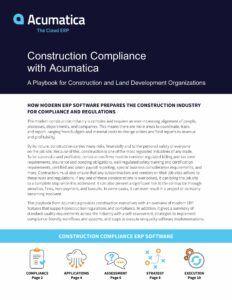
Download Construction Compliance Playbook
Managing Construction Compliance
Complying with applicable laws and regulations protects construction firms and the people who benefit from their services. But as you can see from the areas we have covered, construction compliance is a complex endeavor with constantly changing regulations and requirements. So, how can a construction firm effectively manage compliance?
Here are a few strategies:
- Plan proactively: Develop clear policies and procedures based on construction-specific federal, state, and local laws.
- Provide ongoing training: Communicate with and educate team members on compliance requirements through in-person training, online videos, and easily accessed documentation.
- Perform compliance audits: Regularly review and inspect standards to safeguard against compliance violations.
To help implement these strategies and manage the increasingly complex compliance landscape, construction firms need modern technology to operate in today’s digital economy. Managing construction compliance manually is time- and resource-intensive and can result in human errors, but using industry-specific technology—like an enterprise resource planning (ERP) solution—can help construction firms automate, streamline, and perfect the process.
A modern, cloud-based ERP solution with embedded construction management software enables construction professionals to manage their entire business from one platform, including opportunities, schedules, labor, budgets, change orders, subcontracts—and compliance. The right ERP solution will deliver instant data access, role-based dashboards, and native AI and ML for automation and data processing. It will also supply the financial, job cost accounting, project management, route optimization, CRM, and remote access that drive efficiency, support instant communication, and help construction firms remain compliant with complex regulations.
Conclusion
The importance of construction compliance cannot be understated, and it comes with many challenges.
But construction companies can set themselves up for success by understanding the regulations that apply to them, enacting effective strategies, and implementing a modern ERP solution, like Acumatica. This will help them reduce the risk of accidents, avoid legal penalties, keep projects running on time and in budget, improve worker morale and productivity, and secure future projects.
Says Acumatica customer Shel Waggner, President, American Asphalt Repair & Resurfacing, “With Acumatica, we have a single source of truth that’s actionable, which cuts down on errors, cuts down on confusion, and ultimately makes us more profitable.”
 Canada (English)
Canada (English)
 Columbia
Columbia
 Caribbean and Puerto Rico
Caribbean and Puerto Rico
 Ecuador
Ecuador
 India
India
 Indonesia
Indonesia
 Ireland
Ireland
 Malasya
Malasya
 Mexico
Mexico
 Panama
Panama
 Peru
Peru
 Philippines
Philippines
 Singapore
Singapore
 South Africa
South Africa
 Sri-Lanka
Sri-Lanka
 Thailand
Thailand
 United Kingdom
United Kingdom
 United States
United States

